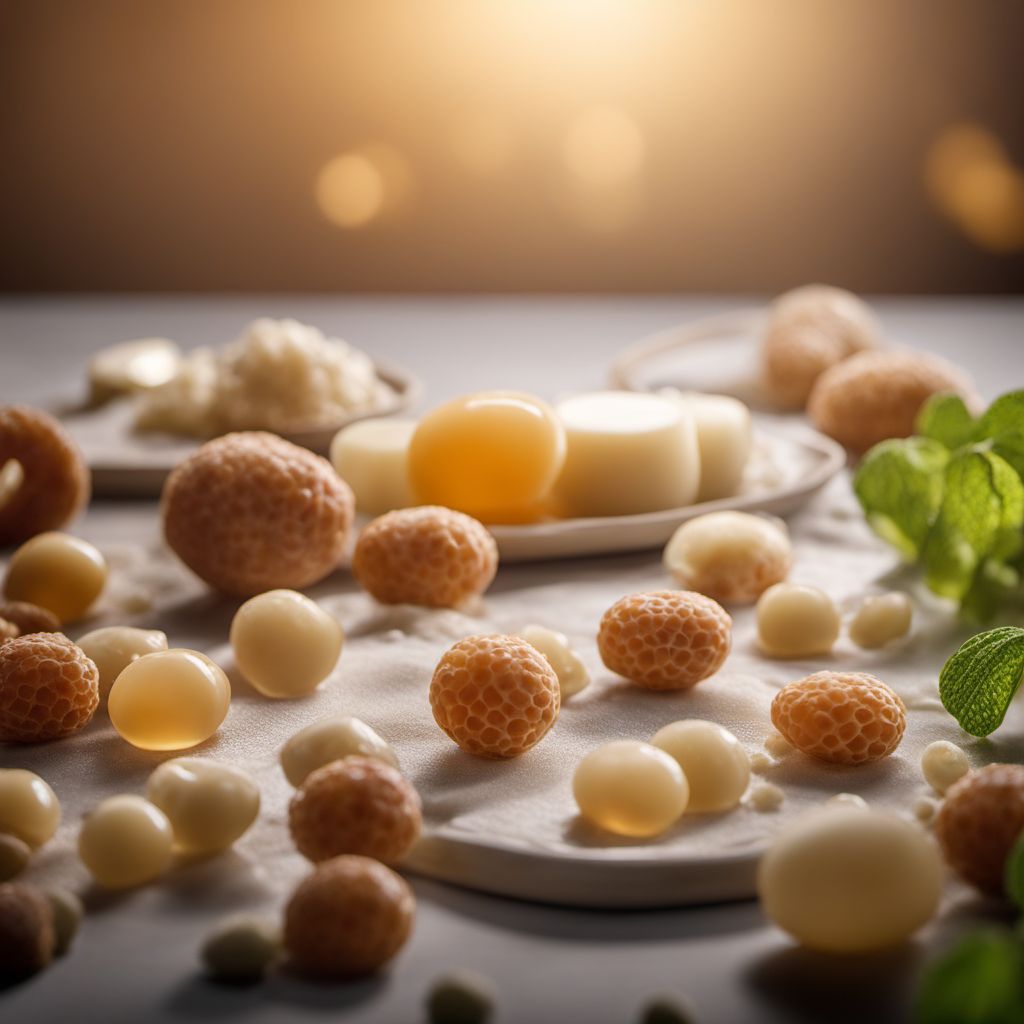
Ingredient
Probiotic cultures
The Gut-Healing Powerhouses: Unleashing the Magic of Probiotic Cultures
Probiotic cultures are microscopic organisms, such as bacteria or yeast, that are beneficial to human health. They are commonly found in fermented foods like yogurt, kefir, sauerkraut, and kimchi. These cultures contribute to a healthy gut by promoting the growth of beneficial bacteria, aiding digestion, boosting the immune system, and improving overall well-being. Probiotic cultures have a tangy and slightly acidic taste, and their texture varies depending on the food they are incorporated into. They can range from creamy and smooth in yogurt to crunchy and crisp in pickles.
Origins and history
The use of probiotic cultures dates back thousands of years to ancient civilizations like the Egyptians, Greeks, and Romans, who recognized the health benefits of fermented foods. Fermentation was a way to preserve food and enhance its nutritional value. Over time, the scientific understanding of probiotics has evolved, and they are now widely studied for their potential therapeutic effects on various health conditions.
Nutritional information
Probiotic cultures are rich in beneficial bacteria that support gut health and digestion. They do not contain significant amounts of calories, fat, or carbohydrates.
Allergens
Probiotic cultures are generally safe for consumption, but individuals with compromised immune systems or specific health conditions should consult a healthcare professional before consuming them.
How to select
When selecting probiotic cultures, look for reputable brands that clearly state the specific strains of bacteria or yeast used. Check the expiration date to ensure freshness and potency. Additionally, choose products that are stored in refrigerated sections to maintain the viability of the cultures.
Storage recommendations
Probiotic cultures should be stored in the refrigerator at temperatures between 35°F and 45°F (2°C and 7°C) to maintain their viability. It is important to keep them sealed tightly to prevent contamination.
How to produce
While producing probiotic cultures at home requires specialized knowledge and equipment, amateur enthusiasts can start by making simple fermented foods like sauerkraut or yogurt using starter cultures available in stores or online.
Preparation tips
To maximize the benefits of probiotic cultures, consume them in their raw or minimally processed form. Avoid heating them at high temperatures, as it can destroy the live cultures. Add probiotic-rich foods like yogurt to smoothies, use sauerkraut as a topping for sandwiches, or enjoy kimchi as a flavorful side dish.
Culinary uses
Probiotic cultures are commonly used in the production of fermented foods and beverages such as yogurt, kefir, kombucha, miso, and sourdough bread. They can also be added to salad dressings, dips, and marinades to enhance flavor and promote gut health.
Availability
Probiotic cultures and foods containing them are widely available in grocery stores, health food stores, and online retailers worldwide.


